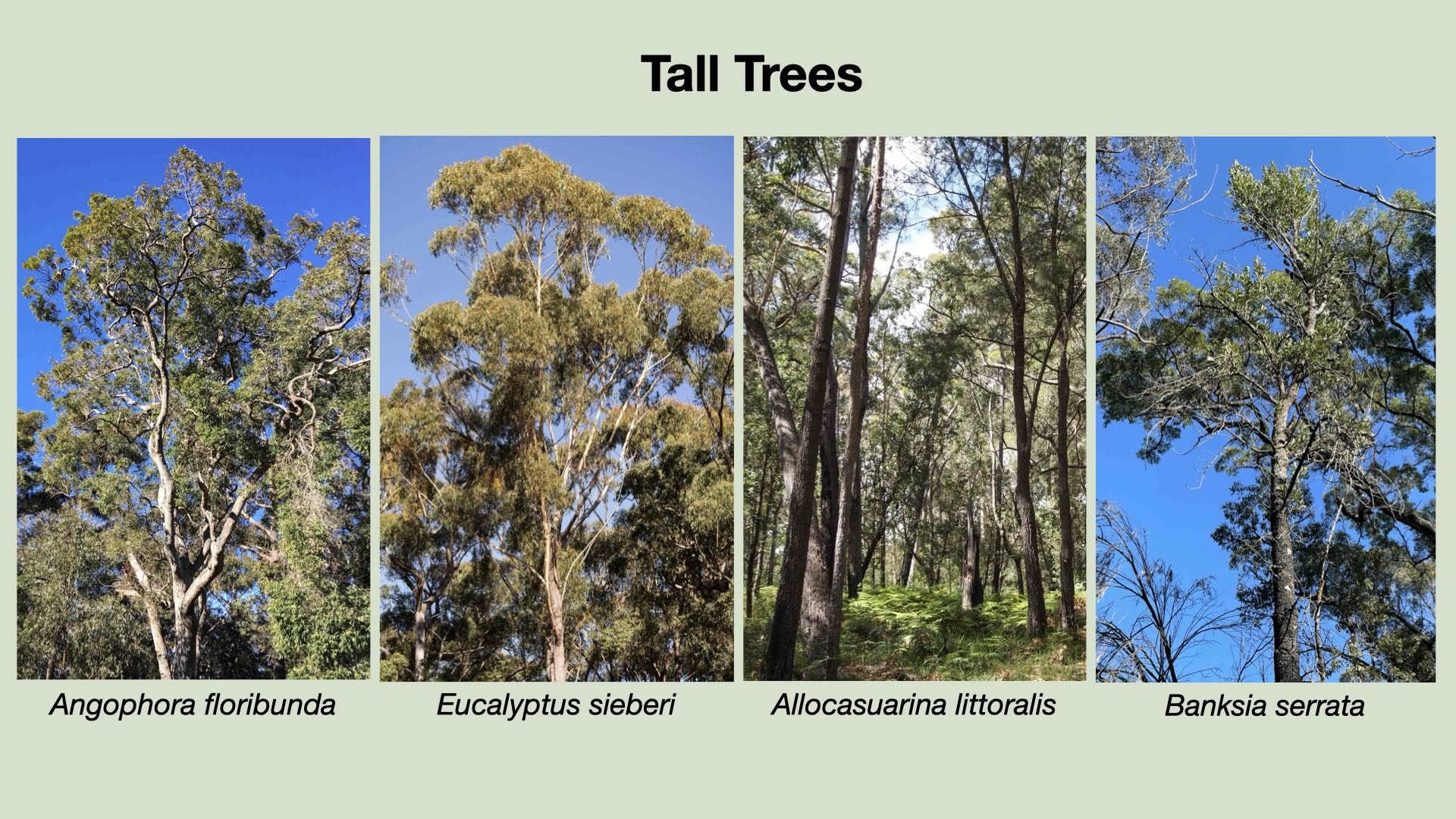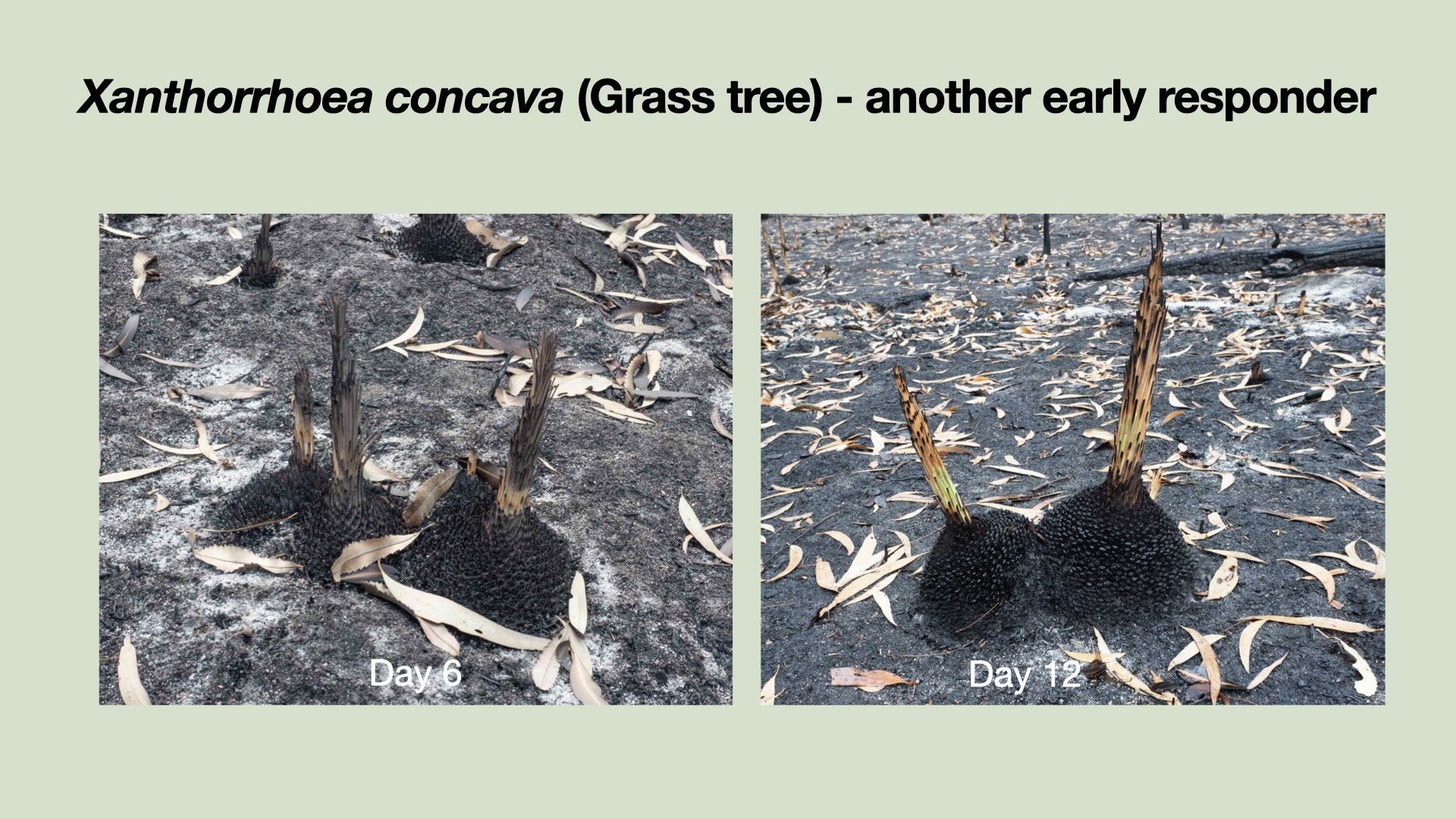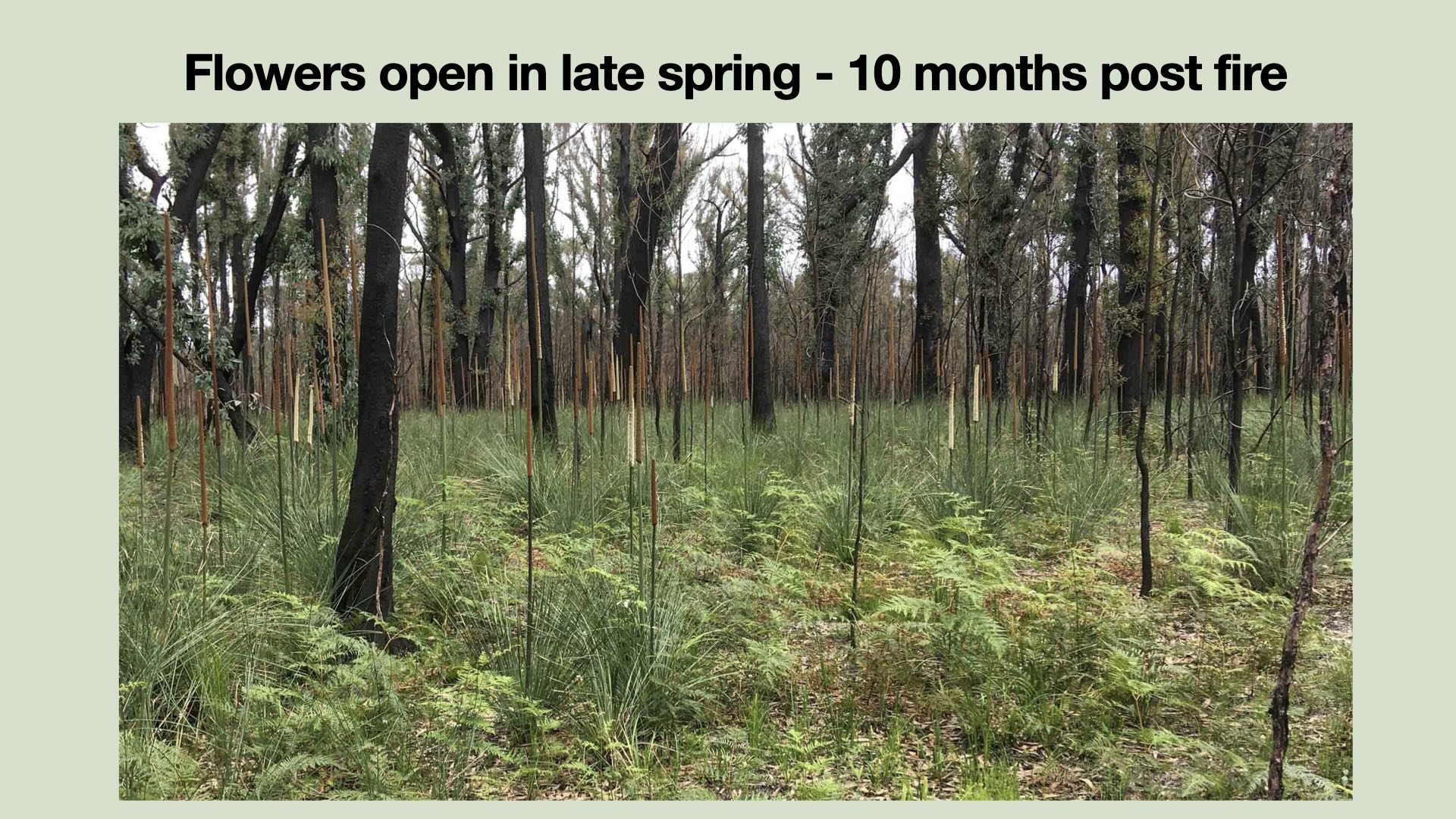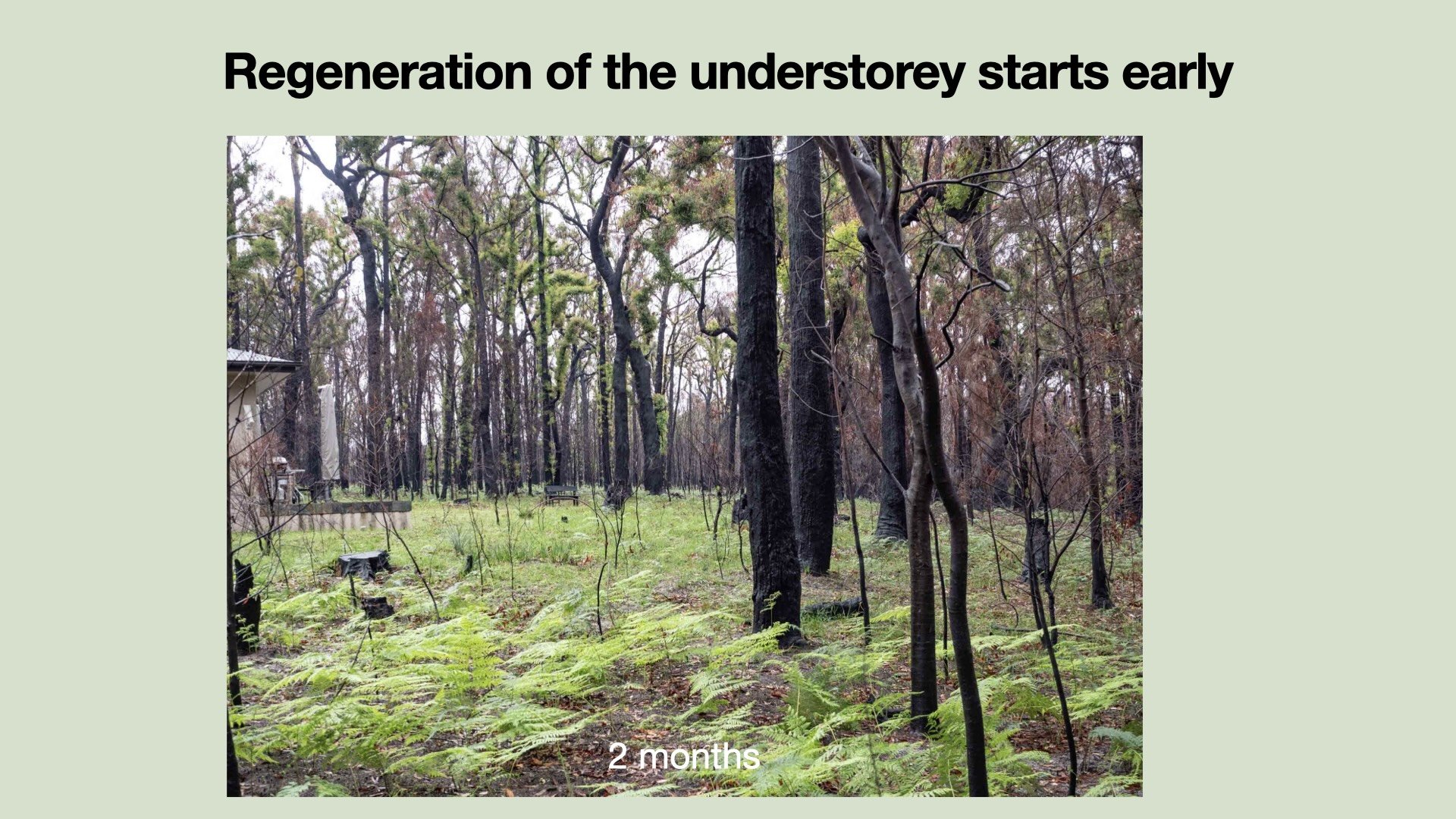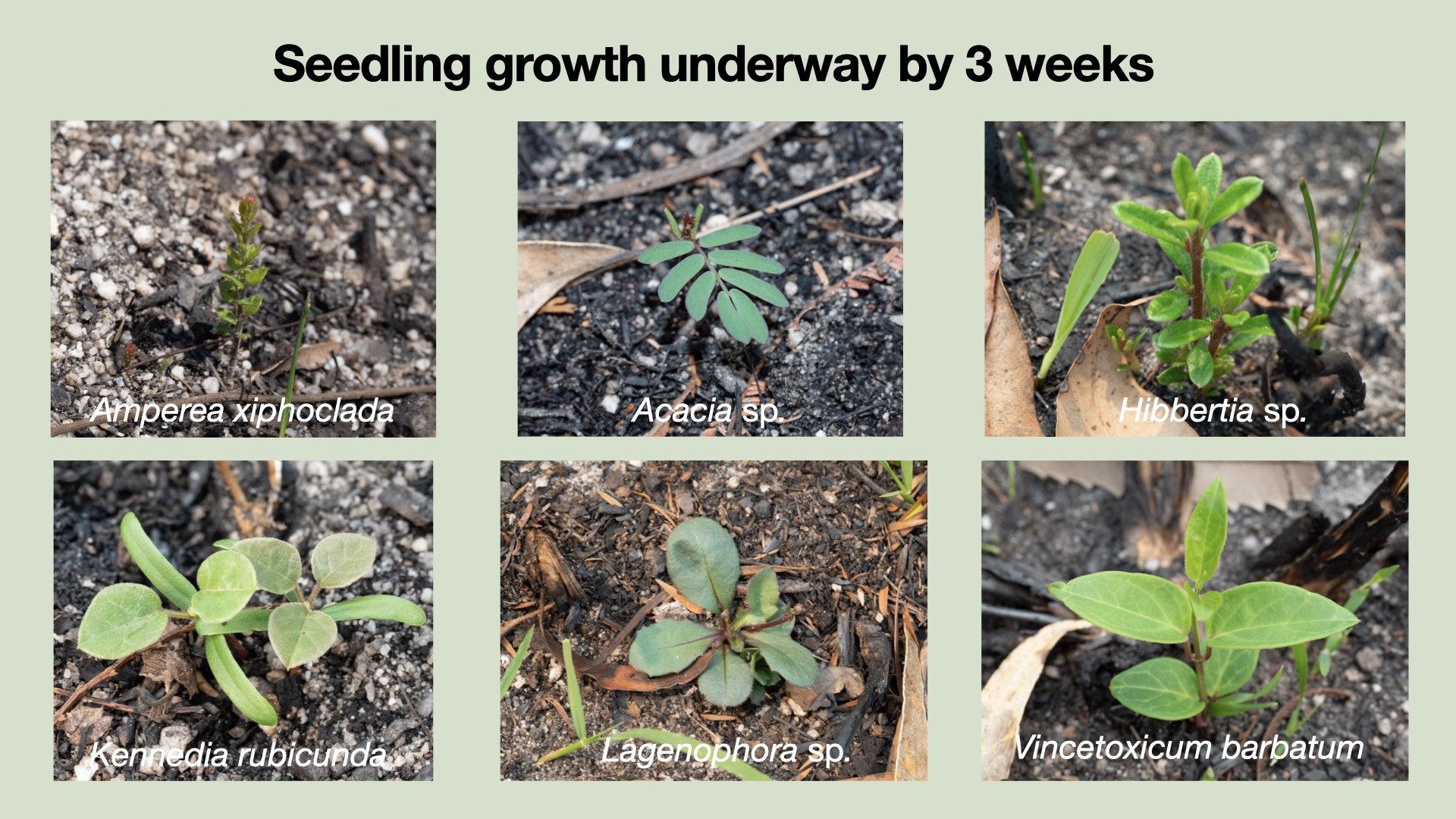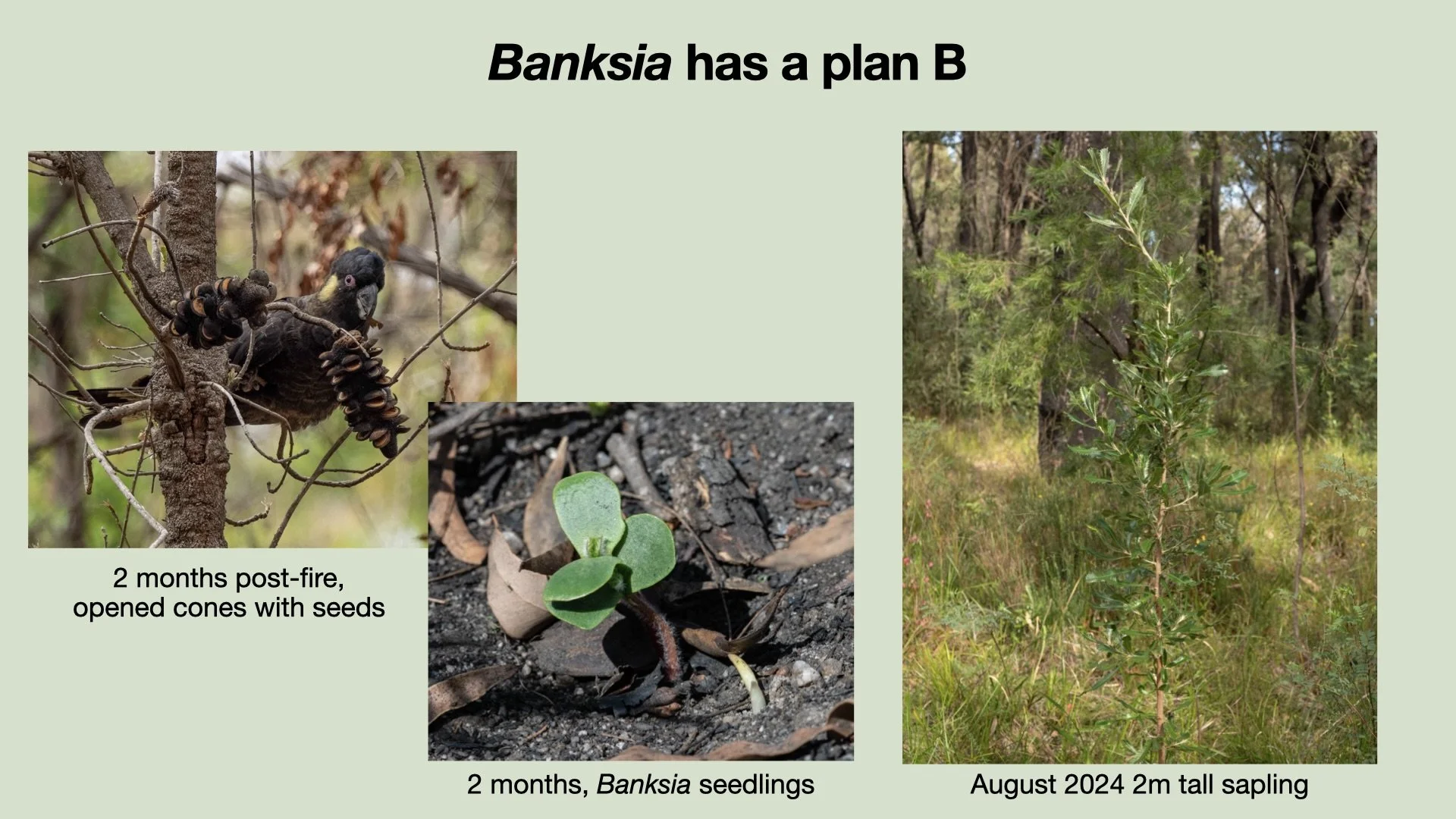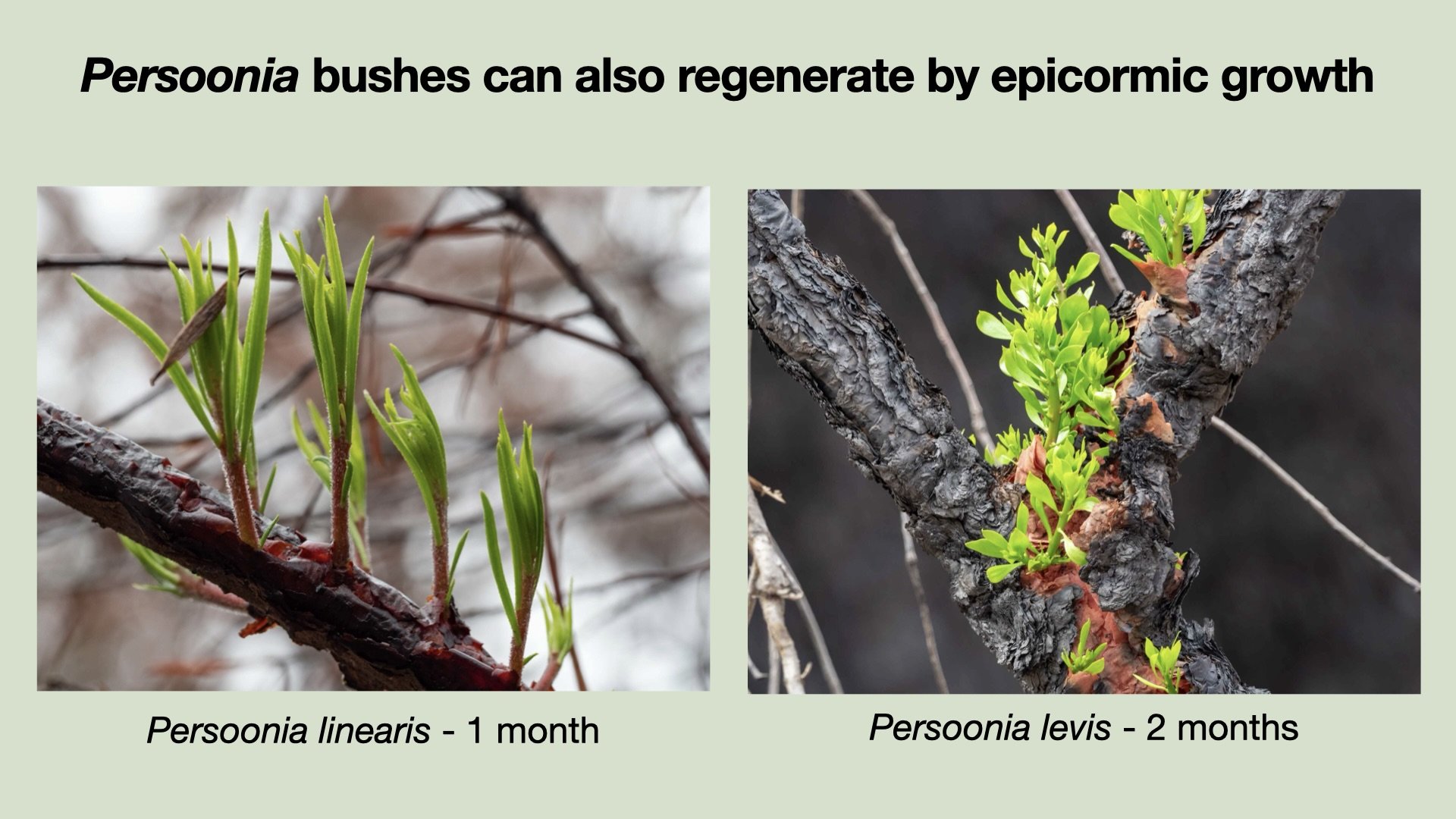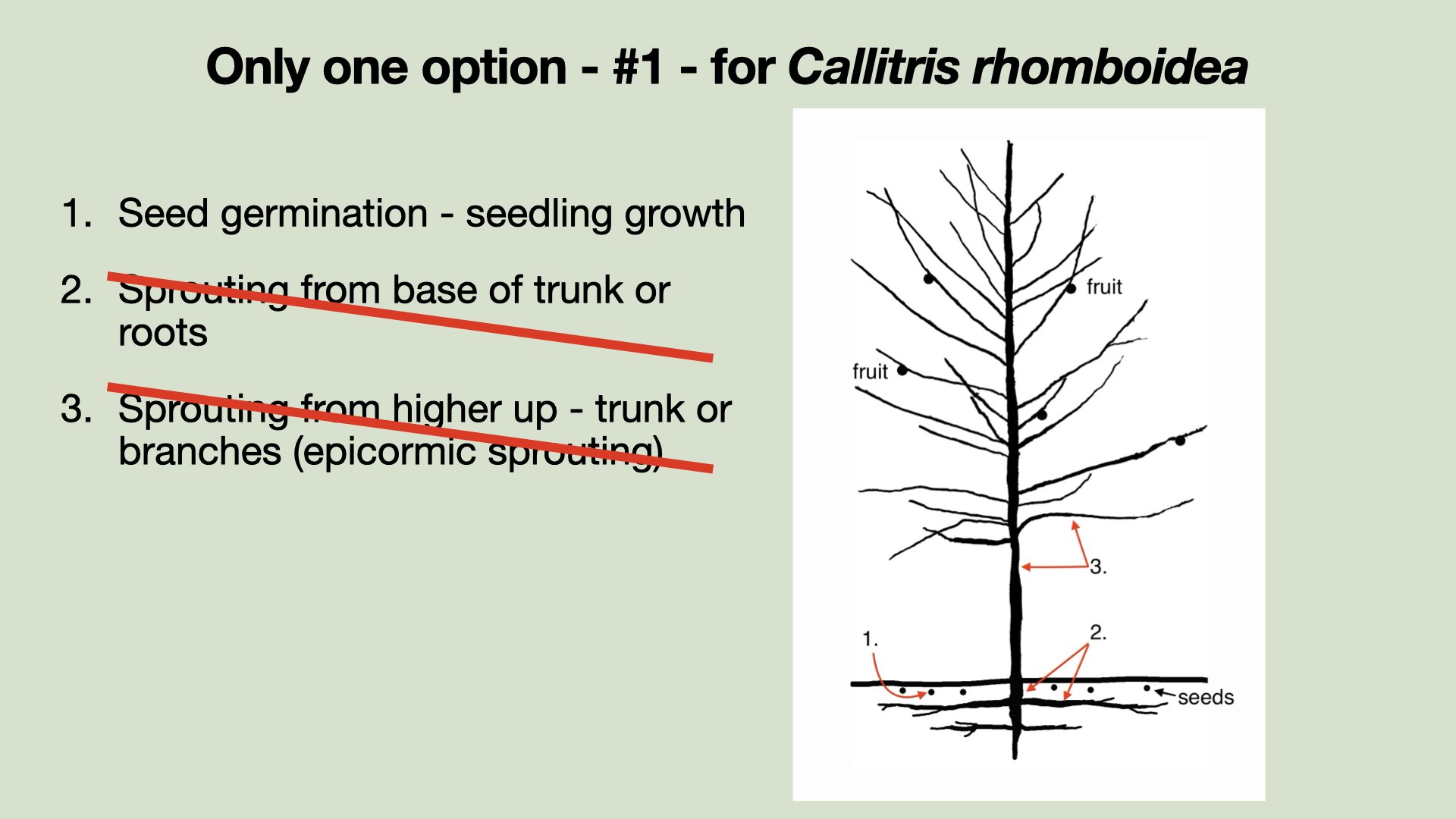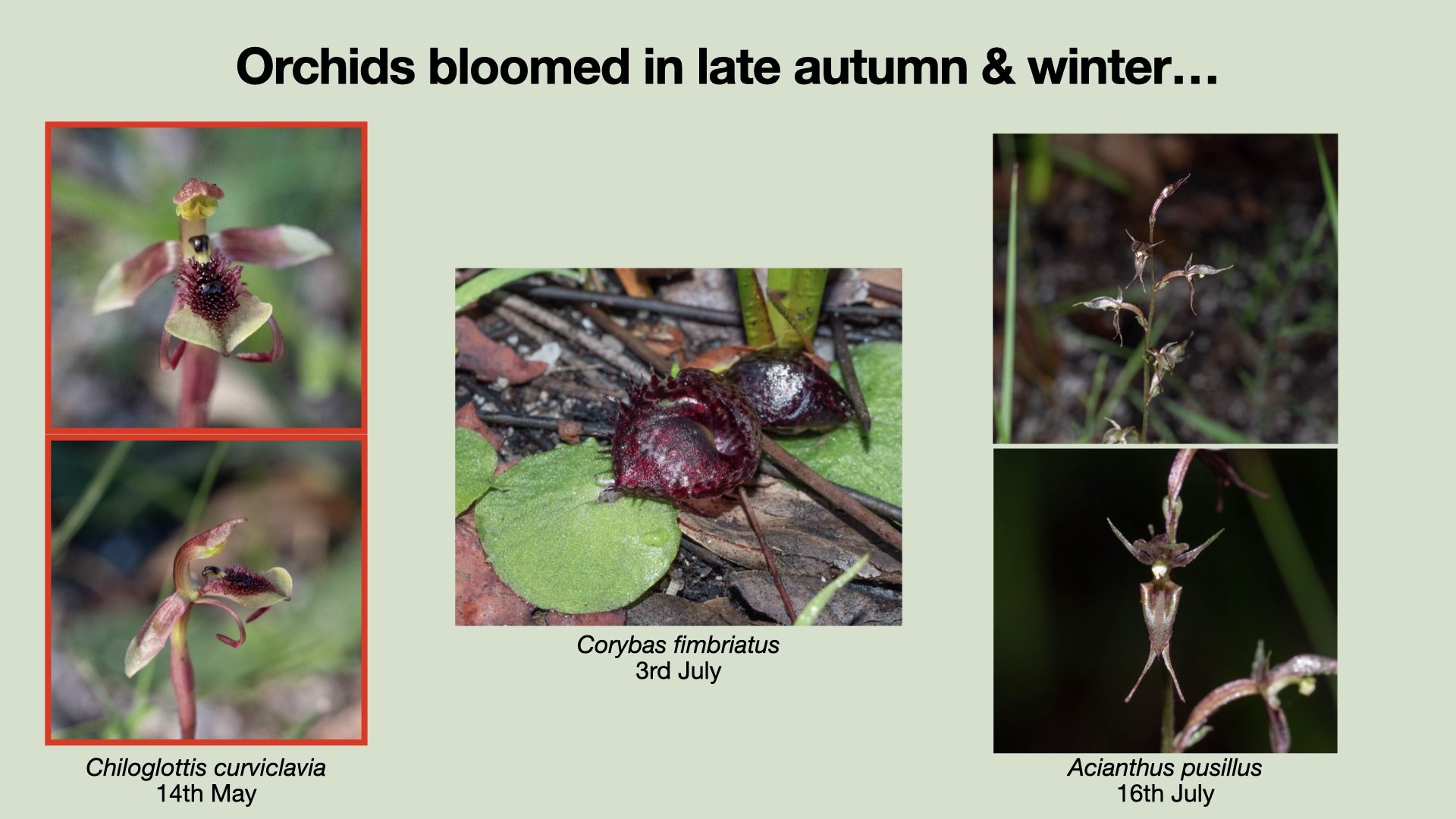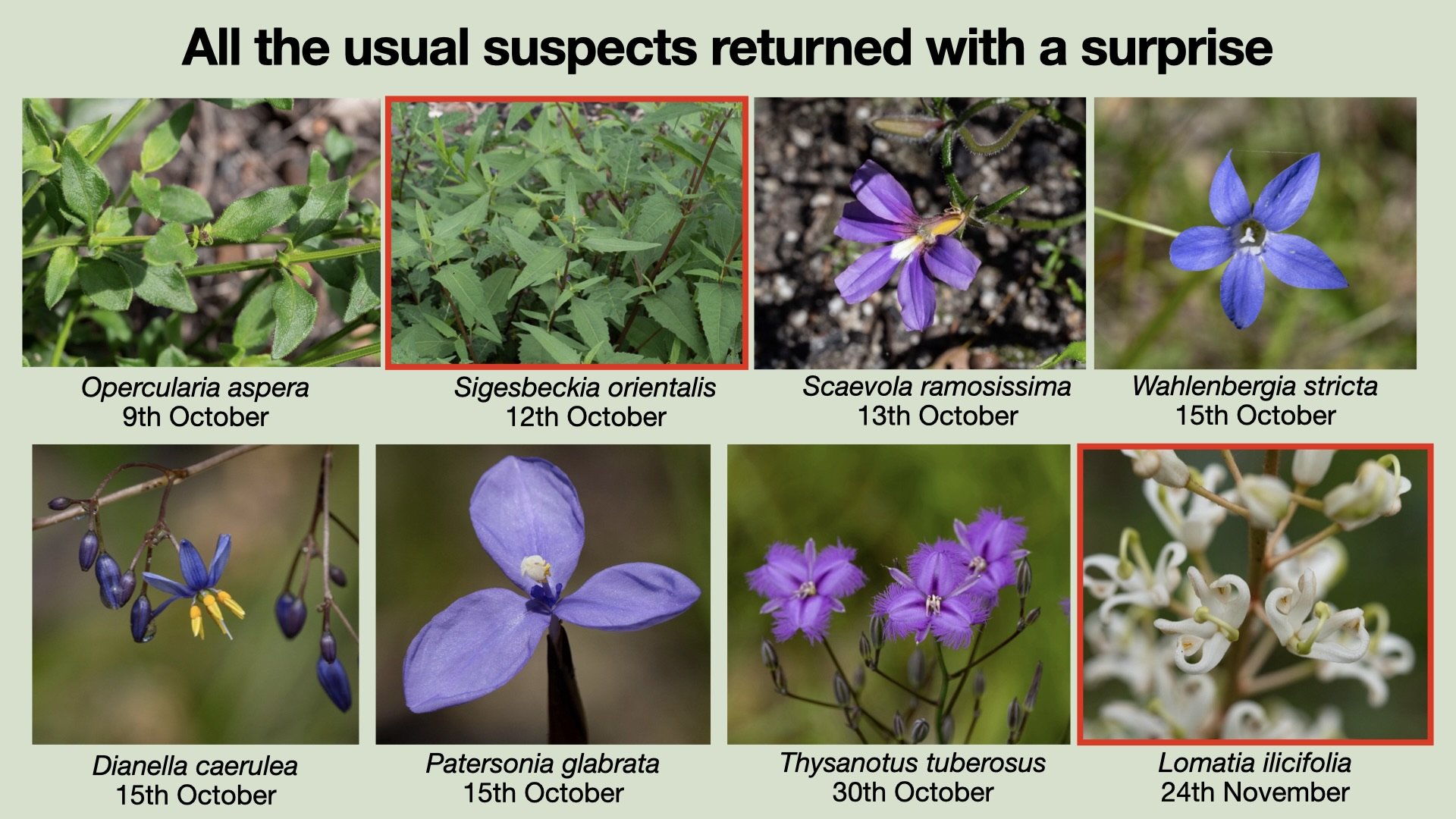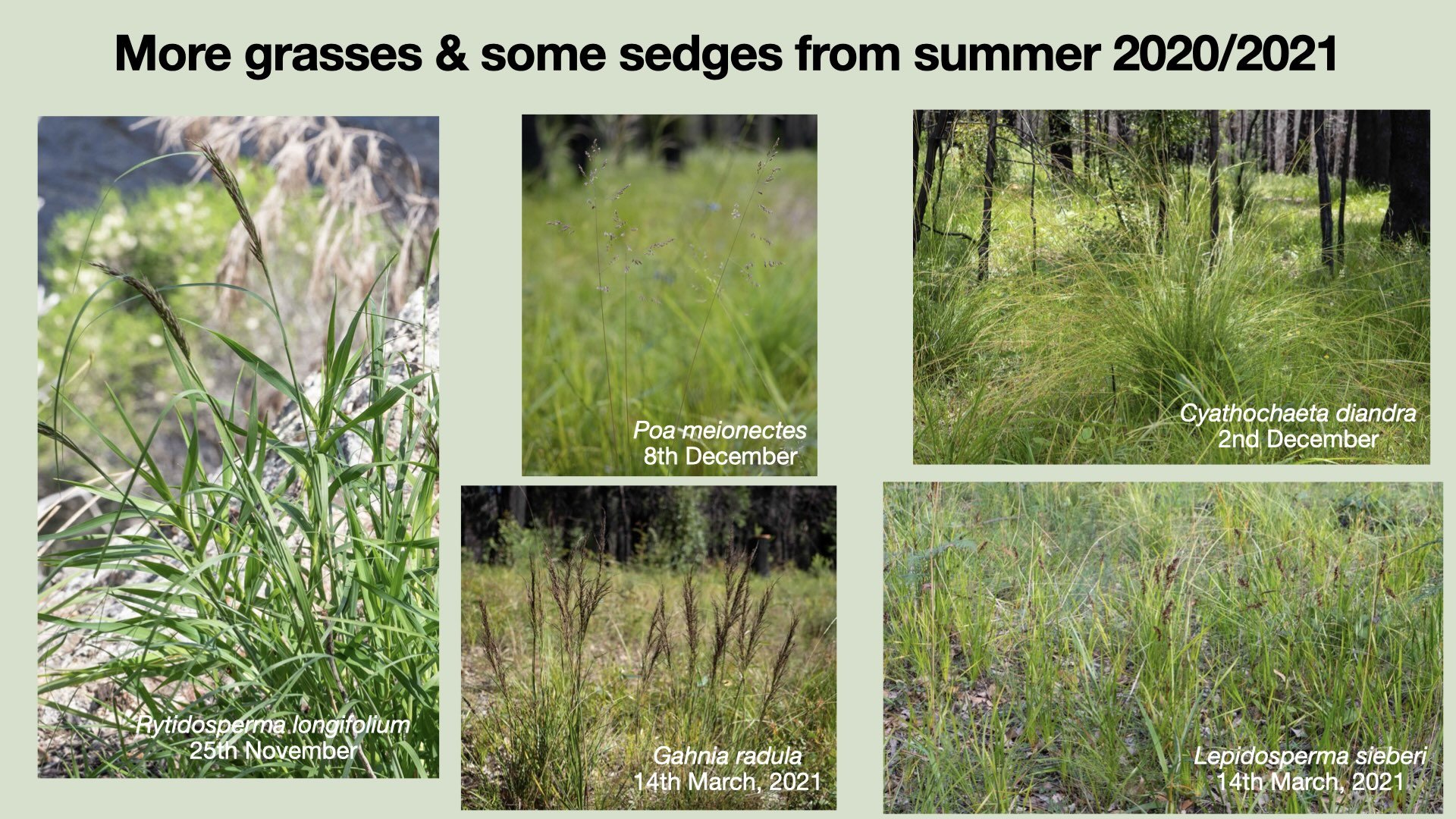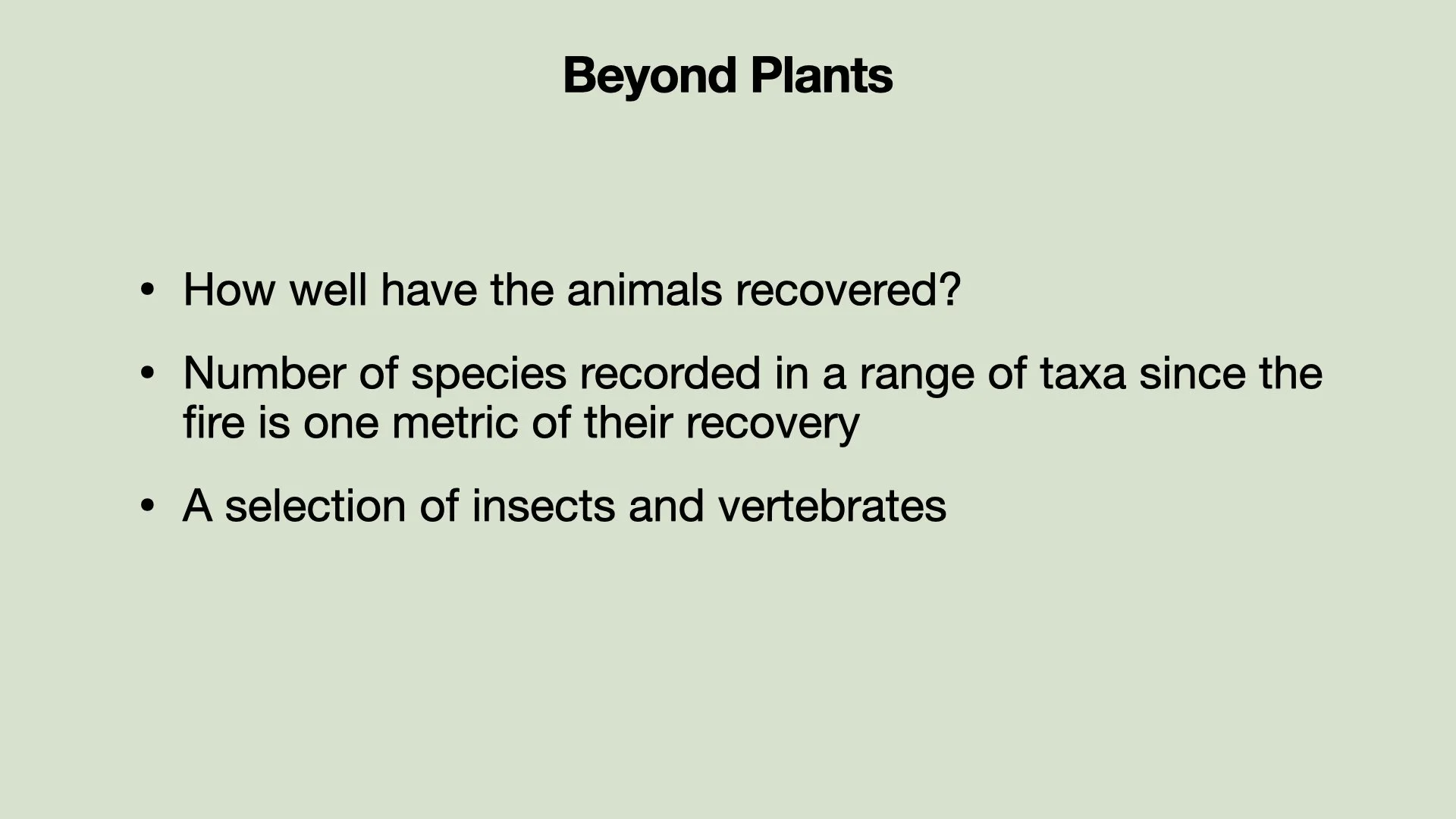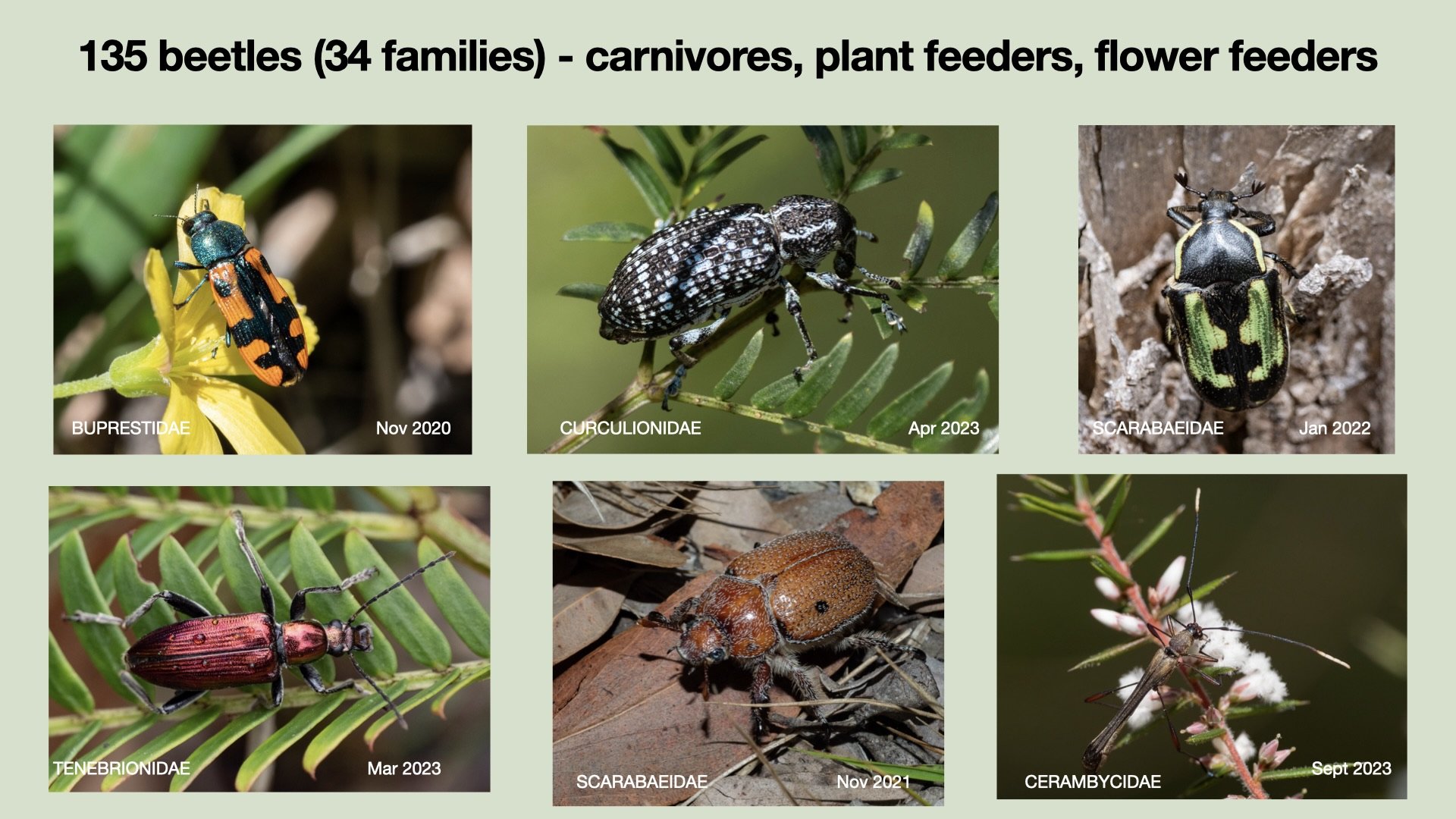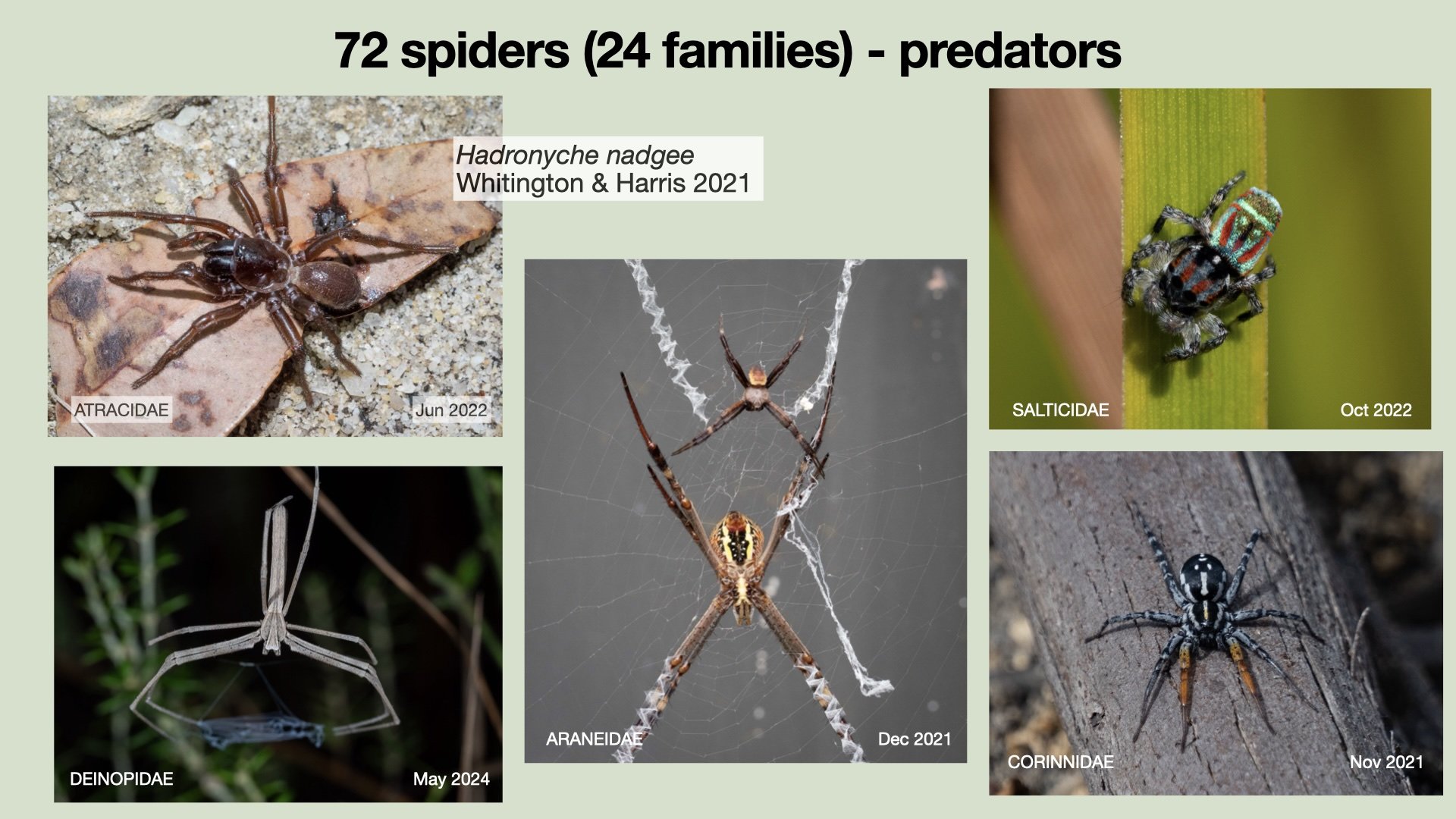The forest's response to wildfire - a symposium presentation
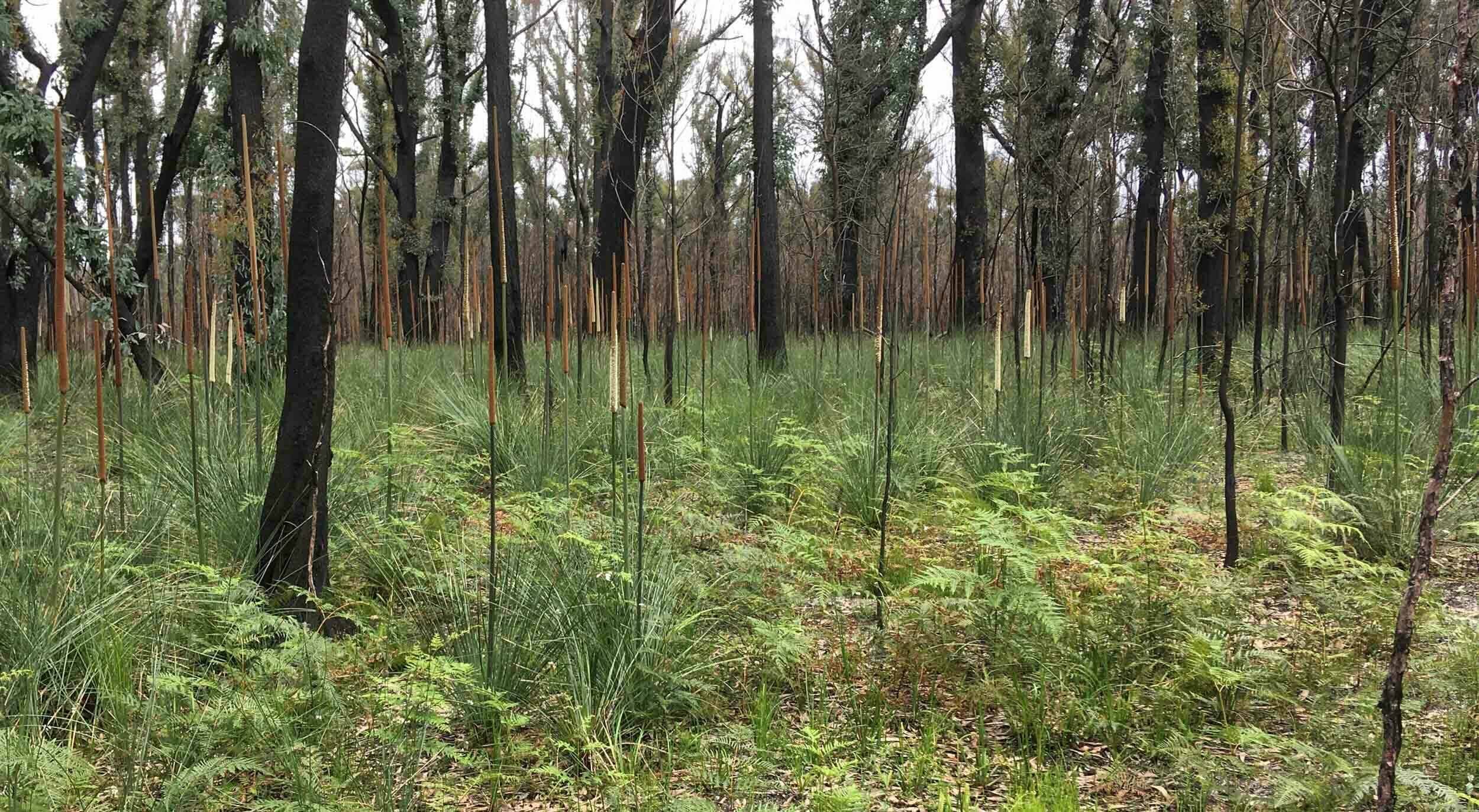
This post is an extended version (Director’s Cut) of a talk I gave on 17th September, 2024 in Batemans Bay at a Symposium of the Linnean Society of NSW.
The symposium “Natural History of the NSW South Coast” covered current research into the geology and geodiversity, flora and fauna, recovery of ecological communities from the bushfires of 2020, and other aspects of the natural history of the South Coast region.
Our study site which also happens to be where we live, is on the far south coast, in the IBRA South East Coastal Ranges subregion, very close to the boundary with the East Gippsland Lowlands subregion.
This is a recognised transition zone for flora and fauna.
The site is a 4ha patch of native forest close to the village of Wonboyn.
It is surrounded by State Forest and close to several large national parks - Nadgee Wilderness Area, Beowa National Park and Mount Imlay National Park.
There is little agriculture nearby - because of the sandy, infertile soils - and so most of the surrounding vegetation is native.
We bought this block in December 2003 and moved here to live in April 2011, after retiring from our academic jobs at the University of Melbourne - to become full time naturalists.
Since then we have been observing and documenting the biodiversity of this patch of forest - the identity of the resident species, their life histories and their interactions.
What does the forest look like at ground level? Here are two views to give you an impression - this one looking west towards Wonboyn River from our house site.
This second view is to the north from the southern boundary of the property. A broad band of grass trees lies within this zone.
The forest is of the dry shrub type and is dominated by tall, mature trees.
There are 7 different eucalypt species - the most common being Angophora floribunda, Eucalyptus sieberi, Eucalyptus globoidea and Eucalyptus cypellocarpa.
In addition there are many tall Allocasuarina littoralis (Black Sheoak) and Banksia serrata trees and a few tall Callitris rhomboidea trees.
The site has well-developed middle and understories, featuring a broad range of species.
There are many large shrubs in the middle storey including 10 different wattle species, 2 Geebung species (Persoonia linearis and Persoonia levis), Hakea macraeana, Elaeocarpus reticulatus and several others.
The understorey is heathy and relatively dense. The species shown here are diagnostic of our forest type.
193 plant species in total have been recorded on site from 2004 to late 2019. 181 of these are native and indigenous.
Click here to see a list of these plants.
There is a varied terrain across the property, ranging from relatively flat areas to shallow and steeply sloping gullies, resulting in a diversity of habitats.
The diversity of the forest across the site is shown by the following analysis.
In September 2014, with the help of a local botanist Steve Burrows, we identified all flowering plant species in six 20x20m quadrats.
Each square shows the total number of species in that quadrat. The number of species in common between adjacent quadrats is shown on the red or black dashed lines joining them.
Quadrats generally have only around half of their species in common and sometimes considerably less.
The high floral diversity of the site is probably due to the fact that it has been relatively undisturbed for an extended period of time.
The vegetation has not been regularly slashed or burnt over the last 30+ years.
In the early hours of the morning of January 5th 2020 a massive bushfire tore through the forest.
Dubbed the Border Fire, it had started 70km to the south in Victoria and had gradually moved north into NSW over several weeks.
We had evacuated to Canberra on 2nd January when it had become clear the fire would impact Wonboyn.
We returned on 9th January, 4 days after the fire struck.
This is what we saw when we returned. At ground level, nothing but ash remained and the entire shrub layer was gone.
Black sticks of the burnt shrubs and small trees were all that was left standing at ground level.
Tree trunks and roots were still smouldering.
The burnt trunks of fallen trees left lines of ash. Most of these were standing dead trees before the fire.
Most of the tall trees were still standing but the canopy was completely scorched. But not consumed. This rates the fire as high severity.
The dead leaves fell to the forest floor over the next several weeks.
Our house had survived which meant we could continue living here.
This gave us a unique opportunity to monitor and record the changes that took place in this ecosystem as it rebuilt itself.
Being continually resident on site we have been able to record species and events that may occur only transiently.
This is therefore a longitudinal, observational case study.
I’ll aim to address these questions in this post.
How did the plants regenerate? There are 3 basic modes available for plant regrowth.
1. Production of a new plant from scratch by germination of seed in soil. The soil covering protects these seeds from the heat of the flames.
2. Sprouting from meristems at base of trunk or roots (again protected from heat of fire by covering of soil).
3. Sprouting from higher up on trunk or branches. These epicormic buds are protected from heat by the covering of bark.
Green shoots of Blady Grass appeared within days of the fire.
These would have regenerated by mode #2 - sprouting from roots buried in the soil.
Another of the earliest signs of regeneration was shown by the Grass trees. There is a wide belt of these plants in the southern part of the site.
A week after the fire, these were just blackened stumps protruding from the grey, ash-covered soil with their tufts of apparently dead leaves.
By day 12 a new green section was pushing up the scorched brown tips. The base of the leaf had been protected during the fire.
Growth of those leaves proceeded apace, as the still living portion of the leaf blade pushed upwards.
This is a fourth mode of regeneration, apical resprouting, which is used by just a few groups of plants.
These early regenerating leaves were shed later and new leaves produced from meristems in the subterranean trunk.
There is a wide band extending across the southern boundary of the site which has thousands of these plants.
They were very apparent at this time because most of the vegetation in between had not yet regrown.
Many of these plants began to flower in late winter after the fire.
The flowering response in the coming Spring was truly spectacular, as seen in the photos below taken in late October.
We estimate that there were around 1,500 of these flowering spikes within our 4ha study site at that time. In a normal year, we see just a handful.
Many birds and insects took advantage of the nectar in these flowers.
Grass tree regeneration was particularly impressive, but the rest of the understorey also began to repair itself from an early stage.
Compare this scene of the forest at 6 days with the next at 2 months.
By 2 months regeneration of the understorey was well and truly well underway.
Two processes were driving this regeneration - seedling growth and rootstock sprouting.
A wide variety of seeds germinated and seedlings were evident as early as 3 weeks after the fire.
Seeds covered by just a centimetre or two of soil would have been protected from the heat of the fire.
On the other hand, some seeds require exposure to high temperatures (e.g. Acacia ssp.- 60 degrees C) to stimulate germination or to open seed pods on the plant.
The seedlings shown here include those of forbs (Gonocarpus, Dichondra) and shrubs (Dodonaea) but also tall trees (Allocasuarina, Banksia and Eucalyptus).
Regeneration also occurred by sprouting from meristems located at the base of burnt stems and trunks or from roots or rhizomes.
Like the seeds, these parts of the plant were protected from the heat of the fire by a covering of soil.
This was the most common method for regeneration seen in our early regrowing plants.
More rootstock sprouting at 4 weeks.
Some trees and large bushes can regenerate their burnt branches and foliage quickly by sprouting above ground level - epicormic sprouting (mode #3).
Epicormic growth began very early after the fire. The first buds appeared on some of our large eucalypts, such as the large, old Angophora floribunda tree on the left, at just 3 weeks.
Dormant meristems on the trunk and branches (epicormic buds) are protected from the heat of the fire by a covering of bark.
These are triggered to sprout by loss of the tree’s crown and begin producing new leaves and branches very rapidly.
Epicormic growth began in all 7 of our eucalypt species within the first month after the fire - both on the trunk and major branches.
A profuse growth of leaves right up the tree was seen in both smooth and rough-barked species by 2 months.
Often this growth was arranged in a spiral pattern on the trunk.
In some cases this process led to a rapid recovery of the form of the tree.
By just 2 months after the fire this Angophora floribunda had regenerated an almost normal looking crown.
For other species, it took considerably longer. Eucalyptus sieberi was the last species to regain its normal form.
Another large tree in our forest - Banksia serrata - was also able to regenerate leaves and branches by epicormic sprouting.
This began a month or so after the eucalypts.
In some cases epicormic sprouting led to almost complete regeneration of Banksia trees.
However, many trees that began sprouting early eventually died.
Such failed regeneration attempts occurred in many of our largest Banksia trees.
As a result, some areas of the forest now receive much more sunlight.
New trees will eventually take the place of those dead trees.
Thousands of Banksia saplings are regrowing from seed across the forest. This seed was released from cones by the heat of the fire.
Some of these saplings are now over 2m tall.
The Geebung (Persoonia linearis and Persoonia levis) is another plant that can regenerate very effectively by epicormic sprouting.
This began around the same time as the eucalypts.
Just a year or so after the fire, almost all of our geebungs appeared normal.
In fact, some looked healthier than before the fire!
Two large forest tree species - Allocasuarina littoralis and Callitris rhomboidea - cannot carry out epicormic sprouting.
These can regenerate only by seedling growth or rootstock sprouting.
There are hundreds of killed tall Allocasuarina littoralis (Black Sheoak) trees in the forest.
These released huge amounts of seed from their cones following the fire.
Some of it was taken by hungry Rainbow Lorikeets before it reached the ground.
Many casuarina seedlings grew from this seed. Some of these are now 3m tall and a few bore fruit last year.
In some cases saplings are regrowing by sprouting from the rootstock of fire-killed trees - an alternative mode of regeneration for this species.
The native pine species Callitris rhomboidea cannot regenerate by either sprouting from the rootstock or epicormic sprouting.
The only option for this species is regrowth from seed.
We had a single huge 40m tall Callitris tree and many smaller 2-3m trees in the forest. These were all killed outright by the fire.
Seedlings appeared but not for several months after the fire and they grew slowly.
The left hand image shows a 5m tall Callitris killed by the fire and a mini-forest of seedlings around its base.
These grew from seed dropped by that tree and are between 30 and 50cm tall at this stage.
Elsewhere in the forest regenerating saplings are reaching heights of 2-3m.
For all except one of our 10 wattle species, regrowth from seed is the only option for regeneration.
The exception is Acacia implexa, which sprouted vigorously from the rootstock after the fire.
Here are seedlings of 3 wattle species, growing from seed in the soil after the fire.
Germination of these wattle seeds requires exposure to temperatures around 60 degrees C and so occurs only after a fire.
Note that the earliest leaves at the base of the seedlings are bipinnate for all 3 species.
The mature leaves higher up the seedlings have taken on a flattened phyllode shape in the case of A. longifolia and A. falciformis.
In contrast, the mature leaves of A. mearnsii retain a bipinnate form.
All of these wattle seedlings grew rapidly, attaining heights of 1 to 1.5m by a year after the fire and 4 to 5m a year after that.
Dense stands of wattle saplings appeared in many areas of the forest. There was clearly a rich seed bank in the soil.
Some species, A. mearnsii in particular, have continued to grow into medium tall trees.
Even today, some areas of the forest are dominated by dense stands of wattles.
However the picture is changing as many of these wattle groves are thinning out naturally.
In some cases, seen here for A. terminalis, this is due to attack by scale insects.
Competition between the closely spaced saplings for water and nutrients is probably also playing a role in this thinning out process.
A number of other middle storey plants, such as Dodonaea triquetra and Goodenia ovata have become more widespread and denser since the fire.
Time will tell whether this represents a permanent change in the forest vegetation.
By 3 months post fire, over half of the plant species recorded at the site before the fire showed signs of regeneration.
Click here to see a list of those early regenerating species and their mode of recovery.
So far I have discussed vegetative regrowth. The new stuff is all green.
But when do these regenerating plants begin sexual reproduction - the ability to make flowers and fruit?
For some plants, we didn’t have to wait long to get an answer to this question.
One species of orchid flowered in autumn. A couple more in winter.
The autumn orchid was a species we’d never sighted in the forest before. (Such ‘new’ species are indicated by a red border).
A total of almost 350mm of rain in July-August provided perfect conditions for an intense spurt of growth and flowering in the understorey.
Another 12 orchid species appeared in quick succession in the late winter and spring.
Some of these were also ones we’d never seen before.
The familiar species were present in much larger numbers and more widely distributed than we’ve ever seen in the past.
The orchid extravaganza was accompanied by a similarly intense flowering of other understorey plants - many familiar species plus a few novelties.
The returning plants were much more abundant and widespread than previously seen.
By the following spring, this distribution and abundance of these plants had largely returned to normal levels.
Yet more of the floral display in the understorey in the spring.
The new species of plants made only a transient appearance.
Although they flowered strongly in the spring 2020, all except two of them had disappeared by the end of the spring.
Those two species - Pelargonium and Passiflora - flowered again in the following spring 2021.
But Passiflora was gone by winter 2022, while Pelargonium flowered once more in spring 2022 but disappeared soon thereafter.
Yet more of the spring flowering boom.
Another new species (Sigesbeckia orientalis) and a familiar one, Lomatia ilicifolia, which we’d never seen in bloom before are shown here.
Lomatia only flowers after fire, so it was a nice surprise, but one we'd rather not receive again in a hurry!
The scale of flowering of grasses and sedges in 2020 was also unprecedented.
17 grass species flowered in that summer. This included a couple of new species and again the familiar ones were much more widespread than normal.
For example, Rytidosperma pallidum (Red Anther Wallaby Grass), which was previously represented by just a handful of plants, suddenly appeared over large areas of the forest.
The grass culms also reached heights we’ve never seen before.
Like the forbs, the growth and flowering of the grasses returned to normal levels in the following year or two.
This extravagant flowering of the grasses and sedges was undoubtedly promoted by the unusually high rainfall (520mm) we received between September 2020 and February 2021.
But a fertilising effect from the ash-laden soil and extra sunlight resulting from the more open forest canopy probably helped.
Let’s fast forward from 2020/2021 to now.
Large parts of the forest look remarkably similar to before the fire, as illustrated by the same scene in 2015 and 2024.
But has everything returned?
Before the fire we had sighted 193 species of plants on the site. We still have 184 of those.
A further 2 made an early appearance but subsequently disappeared. Another 7 are still missing.
We have recorded successful sexual reproduction in 166 of the 184 plants that are currently present - either by flowering, fruiting or sporulating. Most did so for the first time in the first year post fire, while some took a year or two longer to reach maturity.
This graphic doesn’t show the 33 new plant species which we have sighted since the fire. Most of these made only a transient appearance and have now disappeared.
So the plant component of the ecosystem is rebuilding itself nicely and the species mix appears to be returning to its pre fire state - with a number of new additions. But what about the animals?
I’ll provide a snapshot of the recovery of the animals in the forest by listing the number of species of select insect, spider and vertebrate taxa seen since the fire.
These include some of the mega-diverse insect orders - the Lepidoptera (moths and butterflies), Hymenoptera (wasps and bees), Coleoptera (beetles) and Diptera (flies).
The very healthy tally of returning species in each of these taxa is a testament to the health of the forest ecosytem.
I’ve listed the number of species present, together with the number of families they represent.
The larvae of moths, like those of many other insects, play key roles in the forest, consuming vegetation.
The adults comprise a large part of the diet of many birds and other vertebrates - as do many other insects.
The larvae of butterflies are also important plant eaters, while the adults perform the role of pollination as they gather nectar from flowers.
Being diurnal insects, the adults are important prey items for many birds.
The forest denizens doing the main job of pollination are of course the bees, a specialised group of hymenopterans.
The health of many of our plant species is dependent on the activity of these small insects.
Wasps, both adults and their larvae, play a multitude of roles in the forest ecosystem.
The most species rich of the insect orders, the Coleoptera, carry out a similarly diverse range of tasks in the forest.
Flies are surprisingly diverse, both in their appearance and their ecological roles.
Spiders play a more limited, but still central, range of roles in the forest. They’re an important group of invertebrate predators.
We were very pleased to see one particular spider return after the fire. We discovered this new species, Hadronyche nadgee, the Nadgee Funnelweb spider here in 2018.
We published the description of this, Australia’s smallest and ‘newest’ funnelweb spider, in 2021. Click here to read all about it.
Vertebrates also feature in good numbers.
Some are still returning - such as the Jacky Dragon, which we sighted for the first time again since the fire just a couple of weeks ago.
The Southern Brown Bandicoot (listed as endangered in NSW) is one mammal we’d never seen in the forest before the fire. It has benefited from the lush post-fire growth of the understorey.
We’re looking forward to seeing feeding Glossy Black Cockatoos again. It will be a while before the casuarina trees grow high enough to make that possible.
Let me end by acknowledging the help provided in plant identification - both before and after the fire - by two local Bega Valley botanists, Jackie Miles and Steve Burrows.
And finally many thanks to the global iNaturalist community for helping us identify all of the life in our southern forest.








